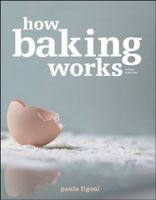🔥 Try our grilling cookbooks and save 25% on ckbk membership with code BBQ25 🔥
Conclusions
By Paula Figoni
Published 2003
Select one from the choices in bold or fill in the blanks.
- The cookie that was the driest (before any extra water was added) was made with bread/cake/pastry flour. This is probably because _____. The differences in dough consistency were small/moderate/large.
- The cookies that stayed whitest were made from bread/cake/pastry flour. These cookies stayed white partly because the flour used was a bleached flour, and also because it was the highest/lowest in protein. The difference in browning was small/moderate/large.
- The cookies with the most cake-like texture were made from bread/cake/pastry flour. These cookies were cake-like because the flour used was chlorinated, allowing starch granules to form its characteristic soft structure as it absorbed water more easily/with much difficulty.
- The cookies that spread the most were made from bread/cake/pastry flour. This was probably because this flour was the most effective/least effective drier of the three, so the dough held its shape better/worse when it was heated.
The cookies that rose the highest were made from bread/cake/pastry flour. The cookies that rose the highest spread more/less than the other cookies. This is probably because
____________________
____________________
____________________
.Compare cookies made with whole white wheat pastry flour to those made with regular pastry flour (the control product). What were the main differences in appearance, flavor, and texture? Explain the main reasons for these differences.
____________________
____________________
____________________
Rank flours from the one that produced the toughest cookies to the most tender.
____________________
____________________
____________________
Which of these differences in toughness can be explained solely by percent protein in flour?
____________________
____________________
____________________
For those differences in toughness that cannot be explained by the percent protein in the flour, how can the differences be explained? _____
____________________
____________________
Which cookies were acceptable overall and which were not? Explain your answer.
____________________
____________________
____________________
Would you expect that certain flours would be more acceptable for certain uses, for example, for decorated gingerbread men, or for traditional shortbread?
____________________
____________________
____________________
Based on the results of this experiment, do you think the type of flour is as important in making cookies as it is in making breads and rolls? Explain your answer.
____________________
____________________
____________________
Become a Premium Member to access this page
Unlimited, ad-free access to hundreds of the world’s best cookbooks
Over 160,000 recipes with thousands more added every month
Recommended by leading chefs and food writers
Powerful search filters to match your tastes
Create collections and add reviews or private notes to any recipe
Swipe to browse each cookbook from cover-to-cover
Manage your subscription via the My Membership page
Part of
Advertisement
Advertisement


